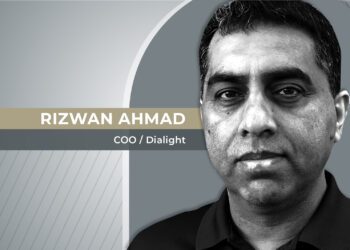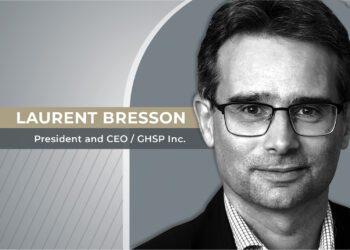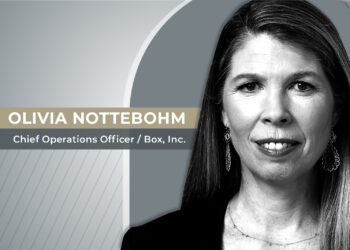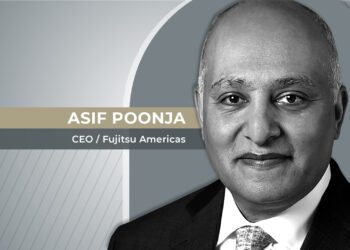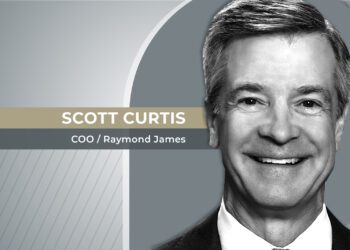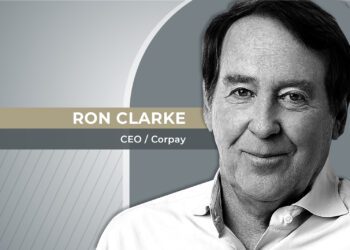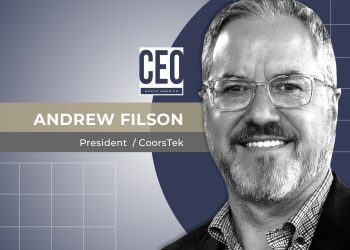AT&T continues to transform itself alongside a changing world, thanks to its CEO Randall Stephenson.
By Oso Oseguera and Anthony Moran
On an episode of Recode Media with Peter Kafka in February, AT&T chairman and CEO Randall Stephenson addressed a number of issues ranging from to why 5G internet will one day replace home broadband to AT&T’s $85 billion 2018 acquisition of Time Warner.
“My objective from day one was to run this acquisition differently than we’ve run any other,” Stephenson told Kafka on the latter topic, which raised eyebrows worldwide.
“In a typical acquisition, we come in, we have processes, we have everything from travel/entertainment expenditure guidelines to cultural aspects. We literally just forklift that onto the target and boom, start running execution, and off we go. Bam!… This one, we said, ‘That’s not the play we’re going to run here.’”
Stephenson is taking a more cautious approach with good reason. The past years have been tough for telecom companies. Their revenue and cash flows have dropped by an average of 6% annually since 2010 as consumption of mobile data boomed.
Companies responded by investing heavily in their wireless networks, even as subscriber growth slowed. As a result, the average ratio of capital spending to revenues has remained stubbornly high, at around 15%, for the major players in the industry. AT&T Inc. is made up of 98 individual companies. Its consolidated revenues for 2018 totaled $170.8 billion, versus $160.5 billion for 2017, up 6.4%, primarily due to the Time Warner acquisition.
Its phone business is still its largest operation by far, but is declining, and the future looks uncertain. Recent acquisitions to reinforce AT&T’s transition from a phone business to a media company have also included buying DirecTV in 2015 for $67 billion, yet when taken together these moves have made AT&T the most heavily indebted nonfinancial company in America. It currently owes over $200 billion.
As a result, unlike those other acquisitions that were more closely aligned with AT&T’s telecommunications history, Randall Stephenson has said Time Warner will be run more independently. “You don’t want this one polluted by a lot of the stuff going over here,” he told Peter Kafka. “Those are very independent and necessary cultures. This one over here is a talent-based culture.”
“Our 5G evolution plans and improved spectrum position are paving the way for the next generation of super-fast mobile and fixed networks,” Stephenson added on AT&T’s future plans.
Notwithstanding Stephenson’s self-belief, however, some analysts—notably, long-time AT&T critic Craig Moffet—believe the company may be in danger of overreach. “AT&T’s ambition in acquiring Time Warner goes far beyond transforming a storied American company,” Moffet stated. “Its goal is nothing less than a complete reinvention of the media ecosystem.
[/fusion_text][/fusion_builder_column][/fusion_builder_row][/fusion_builder_container][fusion_builder_container hundred_percent=”no” hundred_percent_height=”no” hundred_percent_height_scroll=”no” hundred_percent_height_center_content=”yes” equal_height_columns=”no” menu_anchor=”” hide_on_mobile=”small-visibility,medium-visibility,large-visibility” class=”” id=”” background_color=”” background_image=”” background_position=”center center” background_repeat=”no-repeat” fade=”no” background_parallax=”none” enable_mobile=”no” parallax_speed=”0.3″ video_mp4=”” video_webm=”” video_ogv=”” video_url=”” video_aspect_ratio=”16:9″ video_loop=”yes” video_mute=”yes” video_preview_image=”” border_size=”” border_color=”” border_style=”solid” margin_top=”” margin_bottom=”” padding_top=”” padding_right=”” padding_bottom=”” padding_left=””][fusion_builder_row][fusion_builder_column type=”1_1″ layout=”1_1″ spacing=”” center_content=”no” link=”” target=”_self” min_height=”” hide_on_mobile=”small-visibility,medium-visibility,large-visibility” class=”” id=”” background_color=”” background_image=”” background_position=”left top” background_repeat=”no-repeat” hover_type=”none” border_size=”0″ border_color=”” border_style=”solid” border_position=”all” padding_top=”” padding_right=”” padding_bottom=”” padding_left=”” dimension_margin=”” animation_type=”” animation_direction=”left” animation_speed=”0.3″ animation_offset=”” last=”no”][rev_slider alias=”randall-stephenson-2″ /][/fusion_builder_column][/fusion_builder_row][/fusion_builder_container][fusion_builder_container hundred_percent=”no” hundred_percent_height=”no” hundred_percent_height_scroll=”no” hundred_percent_height_center_content=”yes” equal_height_columns=”no” menu_anchor=”” hide_on_mobile=”small-visibility,medium-visibility,large-visibility” class=”” id=”” background_color=”” background_image=”” background_position=”center center” background_repeat=”no-repeat” fade=”no” background_parallax=”none” enable_mobile=”no” parallax_speed=”0.3″ video_mp4=”” video_webm=”” video_ogv=”” video_url=”” video_aspect_ratio=”16:9″ video_loop=”yes” video_mute=”yes” video_preview_image=”” border_size=”” border_color=”” border_style=”solid” margin_top=”” margin_bottom=”” padding_top=”” padding_right=”” padding_bottom=”” padding_left=””][fusion_builder_row][fusion_builder_column type=”1_1″ layout=”1_1″ spacing=”” center_content=”no” link=”” target=”_self” min_height=”” hide_on_mobile=”small-visibility,medium-visibility,large-visibility” class=”” id=”” background_color=”” background_image=”” background_position=”left top” background_repeat=”no-repeat” hover_type=”none” border_size=”0″ border_color=”” border_style=”solid” border_position=”all” padding_top=”” padding_right=”” padding_bottom=”” padding_left=”” dimension_margin=”” animation_type=”” animation_direction=”left” animation_speed=”0.3″ animation_offset=”” last=”no”][fusion_text columns=”” column_min_width=”” column_spacing=”” rule_style=”default” rule_size=”” rule_color=”” class=”” id=””]
A capable leader
As the top man at AT&T, Randall Stephenson knows how to confront problems. The first job he held, at 19 years old, was at BellSouth—one of the seven original Regional Bell Operating Companies before the US Justice Department forced AT&T to divest itself of its regional telephone companies in 1984. Stephenson was recommended to BellSouth by his brother and started out hanging 19-inch magnetic tapes onto tape drives. In short, while he has been CEO of AT&T for 12 years, Stephenson has been in the broader industry for almost four decades. He knows very well how the industry reinvents itself—and often at a frantic pace.
Verizon was traditionally AT&T’s largest competitor, but the latter is now throwing its hat into a different arena entirely. Randall Stephenson has admitted publicly that he spends as much time thinking about Amazon and Netflix nowadays as he does Verizon and Comcast. As telecom companies have suffered through declining revenues, cash flow, and return on investment, tech companies like Google, Facebook, and Amazon have mushroomed by building their businesses on the telecom operators’ own infrastructure.
While tech visionaries have enjoyed well over $1 trillion in combined market-cap growth by innovating and thinking differently and adeptly, telecom companies have struggled to keep up with them by falling back on the same old survival tactics: cutting costs, reducing the workforce, and timidly entering into adjacent businesses. Yet under Stephenson’s leadership, AT&T has recently been aggressively buying media/content companies to add entertainment muscle to their IT networks. The company has 170 million distribution points through which to find an audience.
Public statements he has made suggest Stephenson’s dream is for a “new” AT&T with a strong IT basis and attractive media/entertainment content that flows all over its wired, wireless, and satellite networks. The company is preparing the launch of its Netflix rival in the fourth quarter of 2019. The new service will include HBO programming, movies from multiple major studios, including Warner Bros., and, eventually, original content.
Yet as Warren Buffet commented at a charity event back in March: “Everybody has just got two eyeballs, and they’ve got (a few) hours of discretionary time… maybe four or five hours a day. You’ve got some very, very, very big players that are going to fight over those eyeballs. (But) the eyeballs aren’t going to double. You have very smart people with lots of resources trying to figure out how to grab another half hour of your time.”
Randall Stephenson is one of those very smart people. He insists that AT&T has invested more resources than any other public company in the US over the past five years to deliver innovative technology. The company is betting its future on the next mobile wireless generation—5G—and inroads into the media and entertainment industries to make it work. Yet Stephenson may need to take further gambles to keep pace with AT&T’s new generation of rivals.
[/fusion_text][/fusion_builder_column][/fusion_builder_row][/fusion_builder_container]



